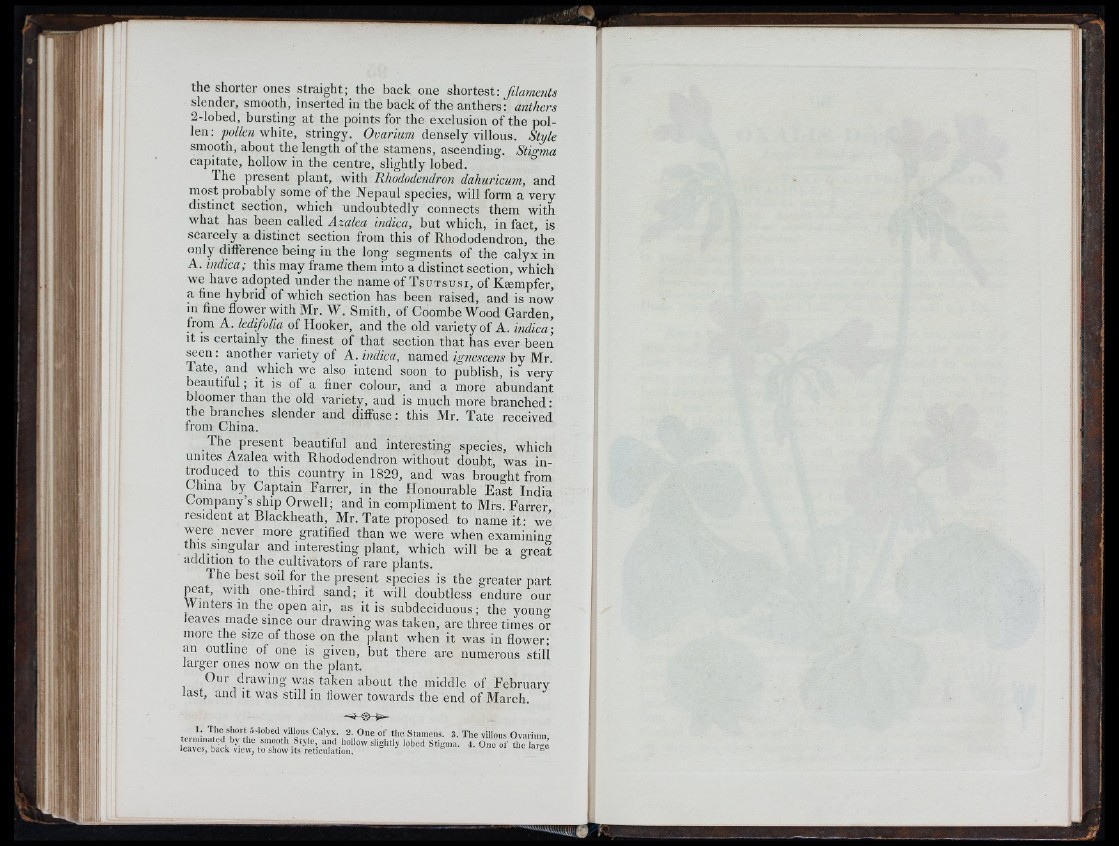
il
the shorter ones straight; the back one shoxtoBt-. filaments
slender, smooth, inserted in the back of the anthers: anthers
2-lobed, bursting at the points for the exclusion of the pollen:
white, stringy. Oraram densely villous. Style
smooth, about the length of the stamens, ascending. Stigma
capitate, hollow in the centre, slightly lobed.
The present plant, with Rhododendron dahuricum, and
most probably some of the Nepaul species, will form a very
distinct section, which undoubtedly connects them with
what has been called Azalea indica, but which, in fact, is
scarcely a distinct section from this of Rhododendron, the
only difference being in the long segments of the calyx in
A. indica; this may frame them into a distinct section, which
we have adopted under the name of T s u t s u s i , of Kmmpfer,
a fine hybrid of which section has been raised, and is novv
m fine flower with Mr. W. Smith, of Coombe Wood Garden,
from A. ledifolia of Hooker, and the old variety of A. indica-,
it is certainly the finest of that section that has ever been
^ e n : another variety of A. indica, named ignescens by Mr.
Tate, and which we also intend soon to publish, is very
beautiful; it is of a finer colour, and a more abundant
bloomer than the old variety, and is much more branched:
the branches slender and diffuse: this Mr. Tate received
from China.
The present beautiful and interesting species, which
unites Azalea with Rhododendron without doubt, was in-
ri-oduced to this country in 1829, and was brought from
China by Captain Farrer, in the Honourable Fast India
Company’s ship Orwell; and in compliment to Mrs. Farrer,
resident at Blackheath, Mr. Tate proposed to name it: we
were never more gratified than we were when examining
this singular and interesting plant, which will be a (.-reat
addition to the cultivators of rare plants. °
The best soil for the present species is the greater part
peat, with one-third sand; it will doubtless endure our
Winters in the open air, as it is subdeciduous; the young
Jeaves made since our drawing was taken, are three times or
more the size of those on the plant when it was in flower;
an outline of one is given, but there are numerous still
larger ones now on the plant.
Our drawing was taken about the middle of February
last, and it was still in flower towards the end of Alarch.
Stamens. 3. Tl.e villous Ovarium
termuiated by the smooth biyle, and hollow slightly lobed ¡Stigma. 4. One of the lar^e
leaves, back view, to show its reliculatioii. & lar^e